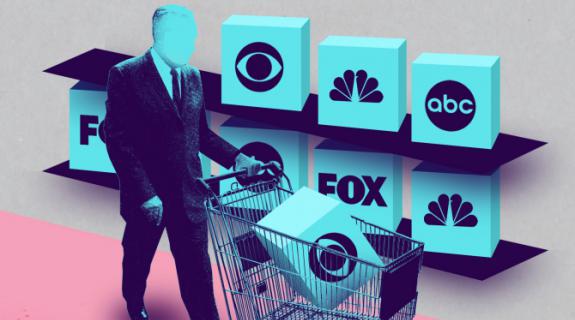The role of media agencies during upfronts used to be clear, much like the upfronts themselves.
The broadcast networks would work their way through multiple pilots and agencies would constantly cut them down so that the networks would have something to show buyers and press during their flashy upfront presentations hosted on New York stages at the Lincoln Center, Radio City Music Hall and Carnegie Hall. Agencies and their network clients would work until the very last minute as networks finalized their choices.
That last part remains true — agencies still cut packages until the last minute — but much else has changed.
The upfronts’ death has long been predicted, but instead of dying, the upfront process seems only to be growing: these days, it lasts far longer and there are far more players. In the not-that-distant past, only the broadcast networks put on lavish upfront presentations. In recent years, however, many others have come to join the party: cable networks from Nickelodeon to A + E Networks to ESPN and digital players from Conde Nast to YouTube.
All of that equals what is both a pro and a con for agencies: far more work.
“I have not found any sort of depreciation, in fact I think we’ve been busier,” says Chris Sloan, founder and chief creator officer of Miami-based 2C Media.
What’s changed, says Sloan, is that “we are now producing more tapes that are precisely directed.
“We do very specific presentations that might be for a very specific advertiser or category that say something to the effect of ‘here’s the proof of what we did and delivered for you.’ A lot of these networks are getting accused of not being creative, and these tapes are intended to offer proof that ‘we’re not outdated and we are thinking differently.’”
For example, Sloan says, ABC Family is rolling out its new campaign targeting a demographic that network has coined as “Becomers.” “Many networks are making the case that demos advertisers used to ignore really have spending power,” says Sloan.
Agencies like 2C are then tasked with creating presentations that demonstrate how the networks’ 360-degree efforts — on-air campaigns, branded integrations, social media and so forth — knit together to work for the client.
Many agencies, while acknowledging that the upfront process can be exhausting and rough on already overtasked staffs, say that it’s particularly fun to create work that’s only going to be seen by internal corporate clients. It means creators can use whatever music they want because they don’t have to worry about clearance rights, and they can play with advanced techniques, because they aren’t trying to appeal to a broad consumer audience.
“You get to play with all the best toys because the networks really want to look their best,” says David Gold, principal at Denizen, an upfront veteran.
Another advantage of working hard for a client during the upfront is the chance that the work will get picked up to help market the show as it heads to air.

“Often the network sets up their year in production based on what happens in the upfront,” says Chris McKenna, principal at Denizen and co-founder of New York-based Wee Beastie. “Many years ago, [when we were working for other agencies], we made upfront presentations for the Discovery Channel. That was the year we created the tapes for Deadliest Catch and Dirty Jobs, both of which were launched at the upfront.
“The graphics package we made for Dirty Jobs became the foundation for that show’s advertising campaign, and we also worked on the marketing for Deadliest Catch. All that upfront work gets you in on the ground floor of building a brand.”

Producers and editors still have to work until the very last minute but many people think that’s part of the fun.
“We’re always cutting up to the last minute because there are so many stakeholders,” says Andy Meyers, partner and creative director at Burbank, Calif.-based M3 Creative. “But that adds to the excitement for us. You are helping your partners sell for the future. You want to be part of their success.”
If agencies’ experience is any indication, the upfronts are not only not dead but alive, well and evolving for the future.
“The upfronts can’t die because they are the lifeblood of what we all do,” says Meyers. “Obviously, they are going to change and evolve; we’ve already seen that. But people always need to sell and that’s what we’re here for.”
Cube image courtesy of Variety.
Tags:













































__twocolumncontent.jpg)











